“And I tell you that the time will soon come when, if men will not learn that lesson, then they will be taught it in fire and blood and anguish.”
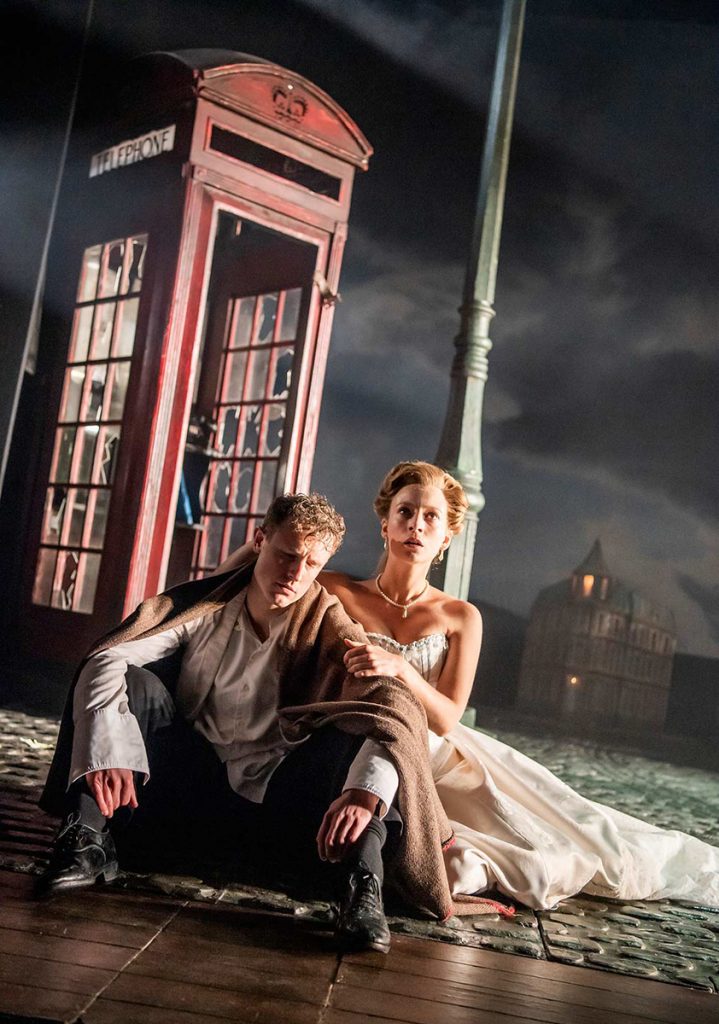
It’s quite often overlooked that, as well as an appeal to our social consciences, J.B.Priestley’s classic play, An Inspector Calls, carries a thinly veiled threat. One of many strengths of Stephen Daldry’s returning production is that the inspector (Liam Brennan) delivers this brutal warning directly to the audience, rather than the assembled cast of characters.
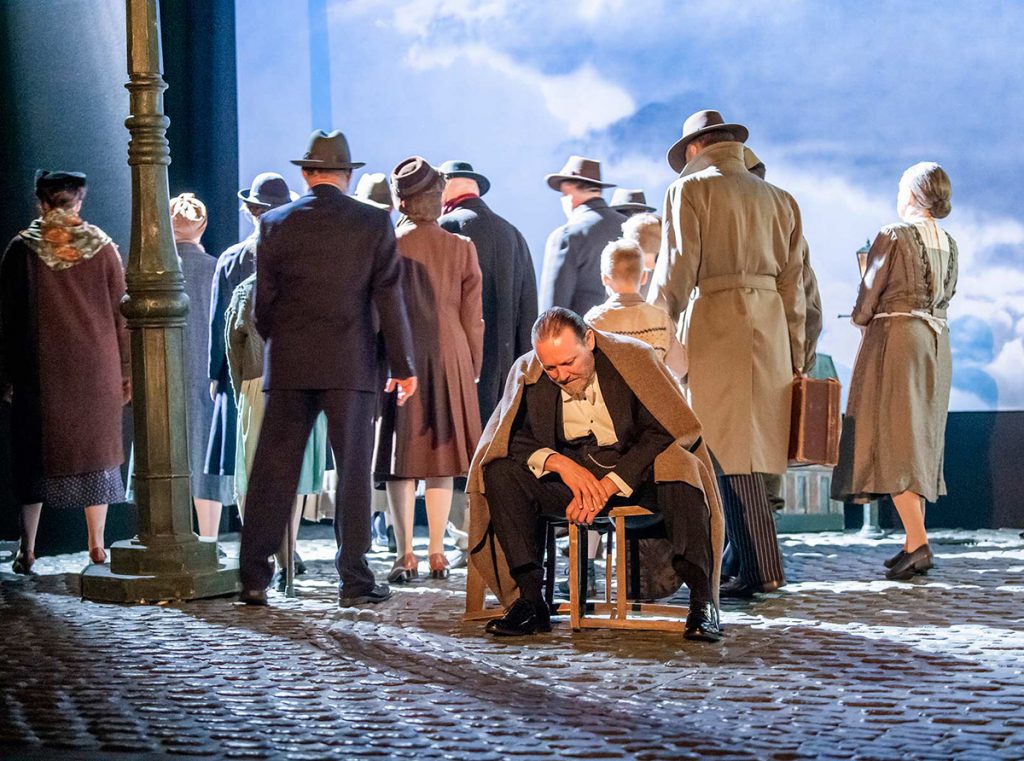
Set in about 1912 (but created at the end of the second world war) An Inspector Calls depicts the family of a wealthy factory owner (Arthur Birling) whose celebration of the betrothal of their daughter, Sheila, to Gerald Croft, the son of even more successful rivals, is interrupted by the arrival of one Inspector Goole. Goole announces the dreadful death by suicide of a working class woman (known both as Eva Smith and as Daisy Renton, for reasons which will become apparent), and as the evening progresses, tears down the hypocritical facade on which their respectability and social standing is founded, by showing how each of them represented an abusive and exploitative link in the chain leading her to self-destruct.
At the heart of the play lies a clash of philosophies. At the very moment Birling senior is pronouncing that ‘a man has to mind his business and look after his own’ (i.e. ‘there’s no such thing as society’), the doorbell announces the arrival of Inspector Goole who will maintain that, ‘[w]e are members of one body. We are responsible for each other.’
The continuing relevance of this debate is one reason the play is on the GCSE syllabus of several examining boards (hence, at least 1000 of tonight’s sell-out crowd are GCSE students). The age of the audience has consequences for the production – grabbing and holding attention being among the challenges.
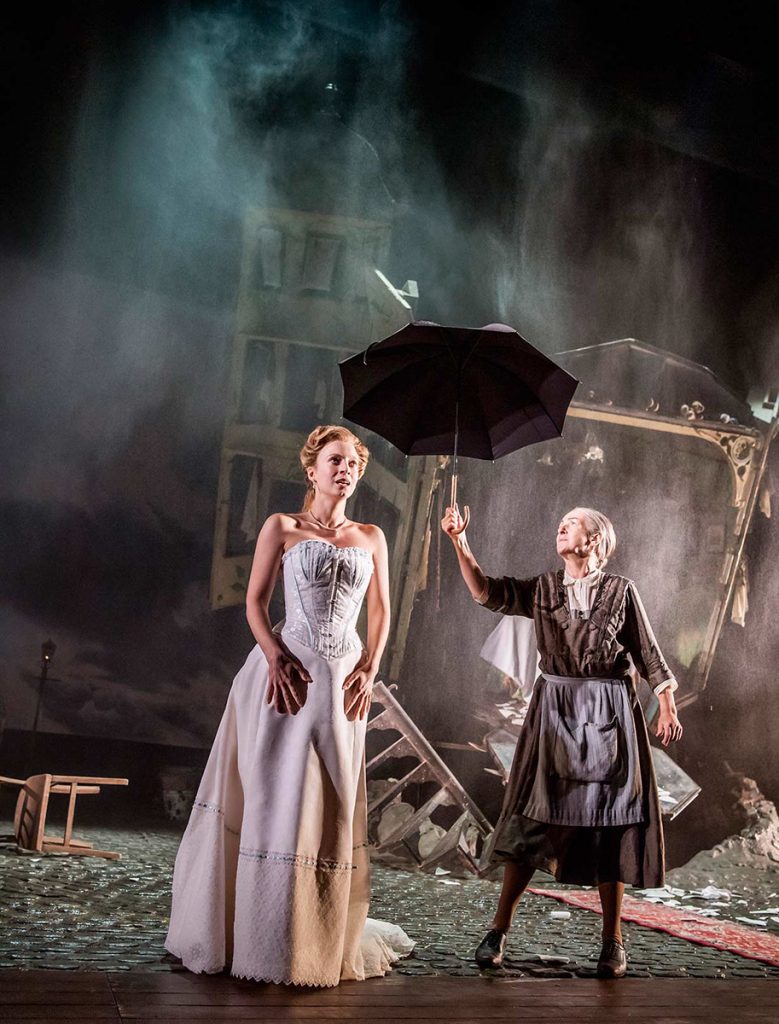
To this end, Ian MacNeil’s astonishing set design can lay claim to being the star of the show. The Birling’s home is represented as a giant doll’s house (which the occupants seem to have outgrown). It swings open to reveal their private lives (and later, literally falls apart). The rest of the set, exquisitely and atmospherically lit by Rick Fisher, not only creates a hyper-natural three-dimensionality, it reminds us that, although set pre-world war one, Priestley’s initial audience were the immediate survivors of world war two (adding a double layer of dramatic irony to Birling’s confident prediction that there will be no war with Germany).
The actors are mic’d up, though the performances still tend towards the shouty. One thousand plus (even reasonably well-behaved) 15-year-olds exude an ambient hubbub, constantly threatening to boil over. (As I say, tonight’s crowd is largely considerate and attentive, but there is a constant sense that we are never more than a thespian mis-step from riotous pantomime).
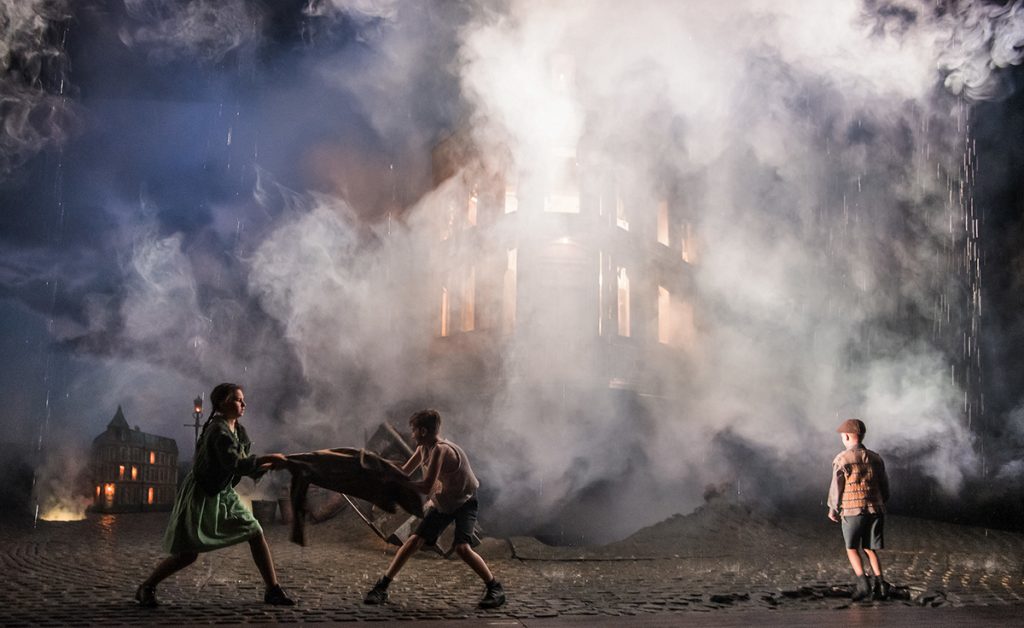
The broad stroke direction makes it hard to assess the performances, but none can be said to let the side down. Christine Kavanagh’s Sybil Birling is regally pompous, whilst Jeffrey Harmer as her husband, bloviates to good effect throughout. The younger roles could be a little more nuanced in delivery (it’s hard to believe that Ryan Saunders’s Eric, a giggling drunken clown, might join his sister, Sheila in a lasting change of attitude towards those less fortunate). Gerald has always been the trickiest role in the play. Alasdair Buchan opts to play him largely for laughs – understandable, given the crowd, but we need to imagine that the transformed Sheila still sees something worth salvaging in him.
Chloe Orrock’s Sheila is so flippant and spoiled to begin with, she almost leaves herself too much ground to cover in convincing us she is the brightest and the best hope for her class. To my mind she just about pulls it off. It’s a brave and eye-catching performance.
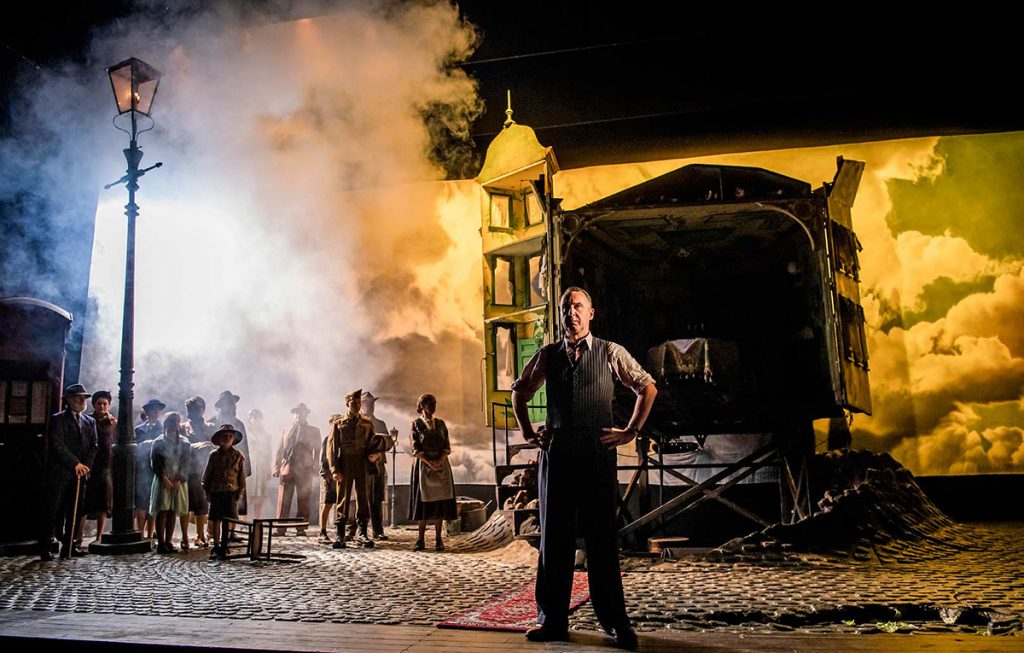
There’s no point in denying it – the ghost of Alastair Sim haunts every actor taking on the role of Inspector Goole. Priestley surely knew the challenge he was throwing down in describing the inspector as someone who ‘need not be a big man, but he creates at once an impression of massiveness, solidity and purposefulness’. Liam Brennan makes a good fist of the challenge, making a Calvinist Scot of the man. The inspector – part policeman, part angel of justice – could use a little more command and gravitas in his closing peroration, but Brennan makes us feels he is the master of those characters gathered on the stage for his cross-examination and our judgement.
Widening inequality, growing injustice, increasing exploitation of the vulnerable by the sanctimonious rich and powerful. Seventy-five years on, An Inspector Calls remains a play for our times.
★ ★ ★ ★The National Theatre’s production of An Inspector Calls is at The Lowry, Salford Quays from 15-18 January 2020 and tours until 23 May 2020. See website for full tour details.

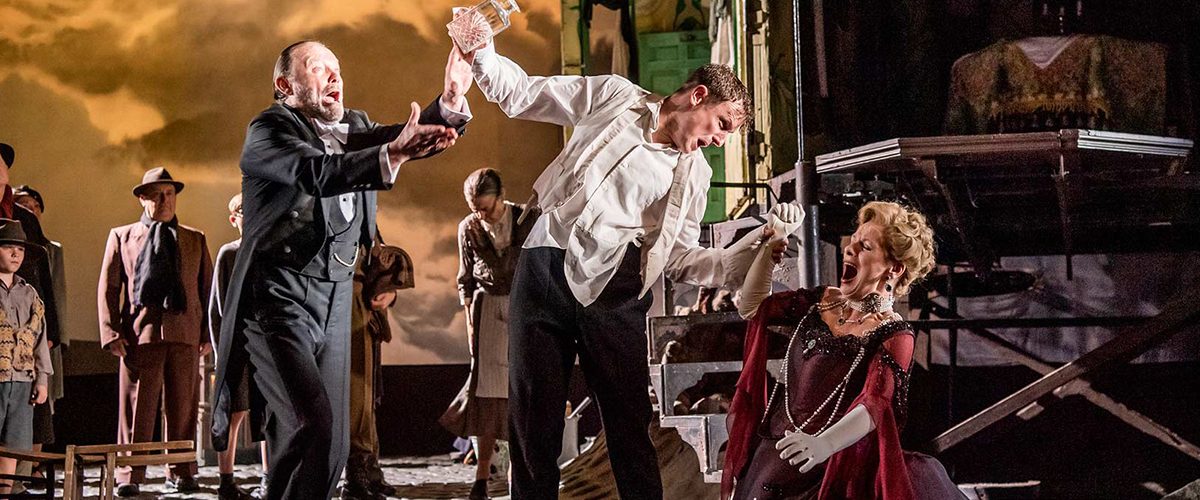




I saw the first production at the National Theatre, and have seen I think, no less than 4 productions since, around the country. It is thrilling, powerful drama, and yes with a ‘message’ but above all, once seen, never forgotten. It is truly spell-binding, so for any one who had not seen it. Whether interested in theatre or not. see it anywhere you can, while you can
Jonathan